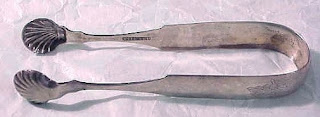[Edward C. Newton was born May 4, 1844, probably at New Madrid, Missouri. He died at Little Rock, Arkansas January 11, 1923. His brothers were also telegraphers, Jeremiah L. Newton (1846 - 1917) pounding the brass at Houston and San Antonio, Texas, and Charles Newton (1853 - 1901) at Frankfort, Kentucky. GMN]
The Coming of the Telegraph to Arkansas
by Edward C. Newton (from The Arkansas Gazette, Little Rock, November 20, 1919)
The most rapid means of communication, previous to the year 1860, between Little Rock and the outside world was by stage coaches and stern wheel steamboats plying between Little Rock and Memphis, the former having the advantage in making a little faster time between these points. This stage line was operated by the firm of Hanger, Rapley & Gaines, and was equipped with large six-horse coaches which arrived and departed daily on a 24-hour schedule, which schedule, however, depended on the condition of the roads, rivers, and bayous. The stage coaches carried the United States mail and also as many passengers as could be accommodated, that is, nine on the three seats inside and two with the driver outside.

But in 1859 H. A. Montgomery of Memphis came to Little Rock and proceeded to organize the Arkansas Telegraph Company for the purpose of building a telegraph line between Little Rock and Memphis, with Chas. P. Bertrand president, and James A. Henry secretary, both of Little Rock, and H. A. Montgomery superintendent. Some stock in this company was placed locally, but Mr. Montgomery retained a majority.
The railroad between Little Rock and Memphis was projected, but not constructed, and the Arkansas Telegraph Company had to find a way for its lines through the primeval forests and swamps, which, in many instances, offered many obstacles not easily overcome. But the promoter was a forceful man of indefatigable energy, and as soon as it was possible to get the wire and material distributed by wagons along the route through the wilderness he proceeded with the work in the then primitive way of building telegraph lines. Brackets, designed to carry square glass insulators, were nailed to trees, and where there were no trees available, post-oak and cypress poles were used. The wire was of plain iron (not galvanized as now) of No. 9 gauge, and was placed in an open slot on receptacles in the top of the square glass insulator, which arrangement allowed it to slide back and forth through the insulator to prevent breakage of the wire by the swaying of the trees in high winds and storms.
The most difficult part of the route was through the forty miles of low country between the St. Francis river and Memphis. In some places the region was at that time almost impenetrable, and it was, besides, the habitat of every wild animal and reptile indigenous to Arkansas. I have heard Mr. Montgomery tell of his adventures in building the telegraph line in this region, which were both thrilling and laughable.
The wire, however, was finally erected and completed in the year 1860 with offices at Little Rock, Brownsville, Des Arc, Clarendon, Madison and Memphis. The office at Little Rock was located on the second floor of an old brick building on the northeast corner of East Markham and Scott streets, which had formerly been the residence of W. E. Woodruff, founder of the Gazette.
It was now demonstrated that a steamboat could announce its departure on the very day of its leaving Memphis, and orders for merchandise could be placed by telegraph for shipment by that boat and also a
telegram might be sent to New York and an answer received the same day. Furthermore, a telegraph news report, of perhaps 200 words, was appearing in the Gazette, which was considered both remarkable and very enterprising on the part of the paper.
The building of this telegraph line was not only and event in the history of Arkansas, but greatly appreciated by the people, especially just at the inception of the Civil War.
The second telegraph line was built between Little Rock and Pine Bluff in1861 by the Pine Bluff Telegraph Co., which was organized at Pine Bluff by Snow & Ketchum, and which also had its office at Little Rock in the old Woodruff Building. David O. Dodd, the young Confederate martyr, who had learned the rudiments of telegraphy, was the operator on that line in 1862 for a brief period. His knowledge of the telegraph alphabet proved his undoing, for he used it as a code in an attempt to conceal the information about the Federal forces he had obtained on a later visit to Little Rock, resulting in his capture and execution as a spy in 1864. This unfortunate boy, modest and unassuming in his manner and appearance, showed the qualities of a hero at his trial when, on an offer of clemency, he refused, even to the last minute on the scaffold, to disclose the name of the person who furnished the important military information found in his possession.
When the Confederate troops evacuated Little Rock in September, 1863, the Arkansas Telegraph Company, with which I was then associated, retreated also, saving as much wire and material as possible for the purpose of extending its line from Arkdelphia via Camden to Shreveport. The United States Military Telegraph controlled the wires running out of Little Rock during the occupation of the city by the Federal forces, which wires were returned to the companies six months after the close of the Civil War.
H. A. Montgomery, the pioneer of the telegraph in Arkansas, disposed of his telegraph interests to a larger company soon after the war. He became a prominent and wealthy citizen of Memphis. The celebrated Montgomery Park was named for him. He died in that city and a life-like marble statue of heroic size was erected to his memory at his tomb, in Elmwood cemetery.











